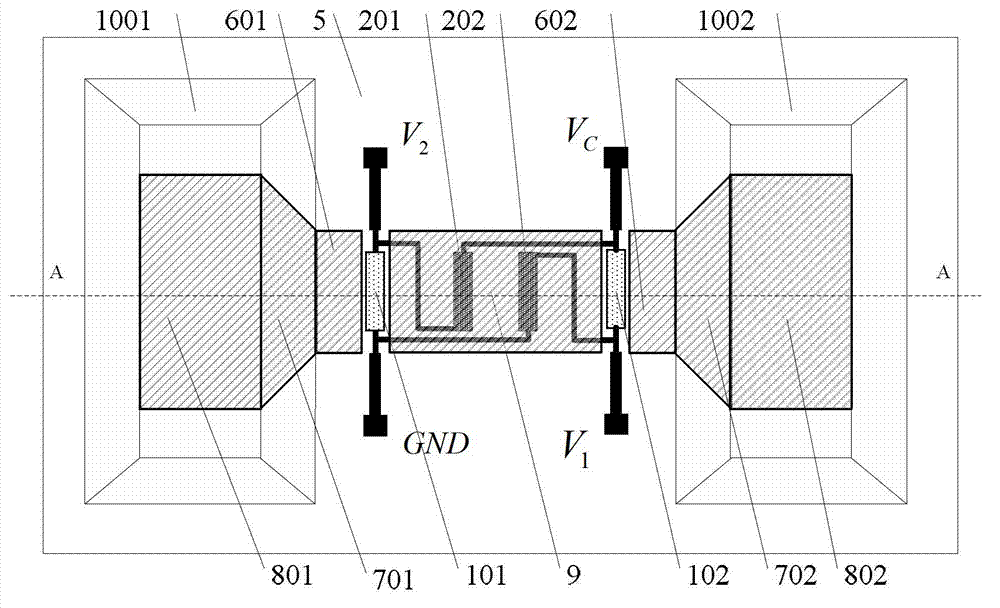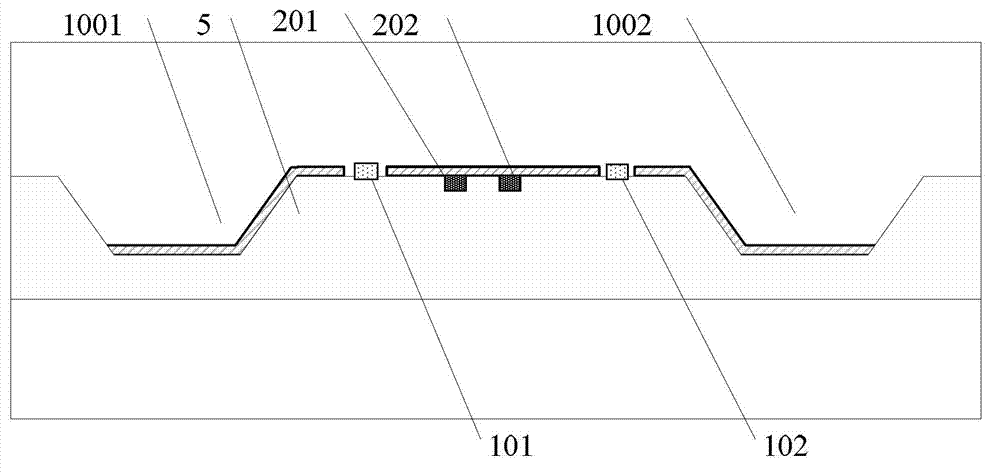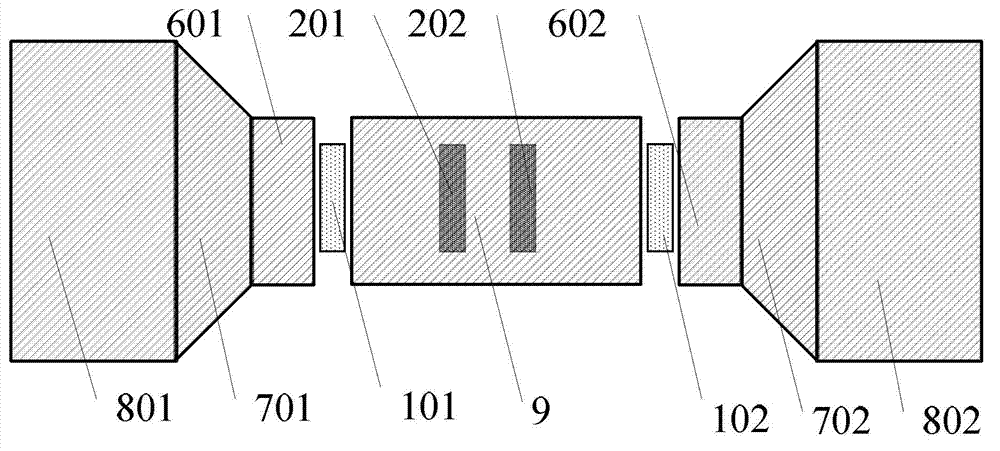Z-direction magnetic field sensor with magnetic orbit structure
A magnetic field sensor and magnetic track change technology, applied in the field of weak signal sensing, can solve the problems of difficulty in guaranteeing consistency, limited resolution, and high difficulty, and achieve the effects of simple and compact structure, guaranteed orthogonality, and low cost.
- Summary
- Abstract
- Description
- Claims
- Application Information
AI Technical Summary
Problems solved by technology
Method used
Image
Examples
Embodiment Construction
[0024] The present invention will be further described in detail below in conjunction with the accompanying drawings and specific embodiments.
[0025] Such as figure 1 and figure 2 As shown, the Z-direction magnetic field sensor adopting the magnetic track structure of the present invention includes a substrate 5, two pairs of input and output electrodes, two pairs of GMR sensitive elements and GMR reference elements, and symmetrically arranged magnetic flux concentrators. Two pairs of input and output electrodes are plated on the surface of the substrate 5, namely: each pair includes a set of Wheatstone bridge bias electrodes and Wheatstone bridge signal output electrodes, the first Wheatstone bridge bias electrode 301 and the first Wheatstone bridge bias electrode 301 and the first Wheatstone bridge bias electrode 301 The bridge signal output electrode 401 is a pair, and the second Wheatstone bridge bias electrode 302 and the second Wheatstone bridge signal output electro...
PUM
 Login to View More
Login to View More Abstract
Description
Claims
Application Information
 Login to View More
Login to View More - R&D
- Intellectual Property
- Life Sciences
- Materials
- Tech Scout
- Unparalleled Data Quality
- Higher Quality Content
- 60% Fewer Hallucinations
Browse by: Latest US Patents, China's latest patents, Technical Efficacy Thesaurus, Application Domain, Technology Topic, Popular Technical Reports.
© 2025 PatSnap. All rights reserved.Legal|Privacy policy|Modern Slavery Act Transparency Statement|Sitemap|About US| Contact US: help@patsnap.com



